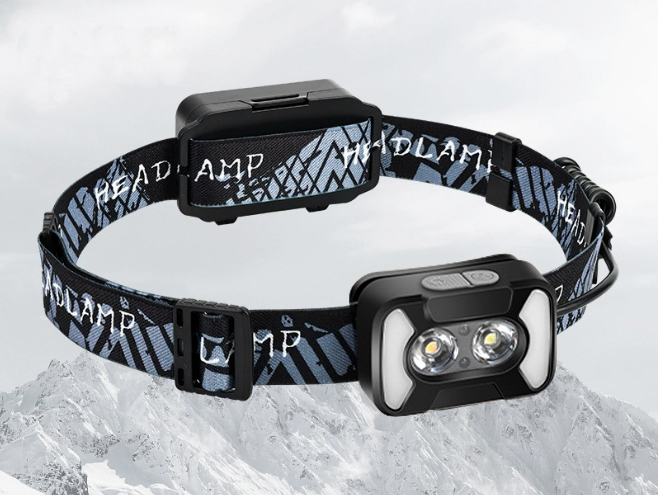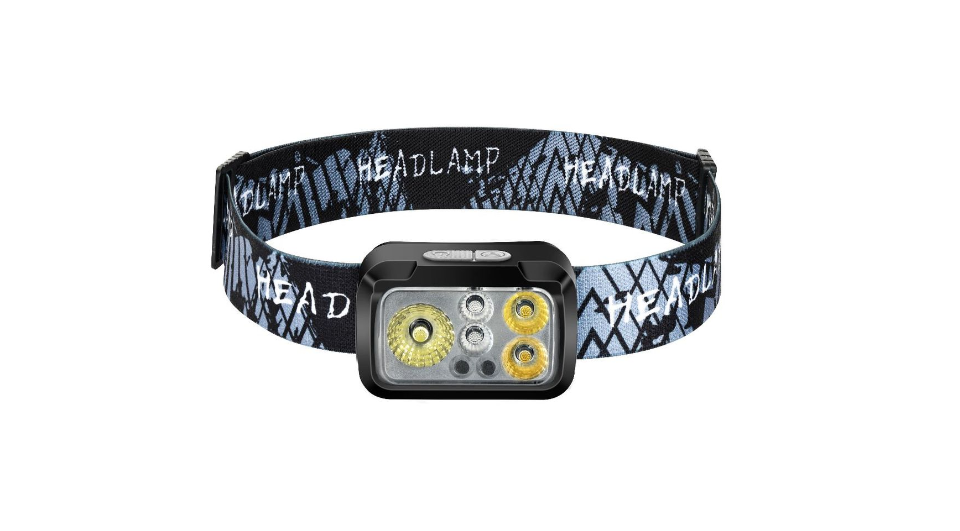Investing in sensor headlamp tooling can significantly impact production outcomes for small orders. This decision depends on factors such as the anticipated order volume and the potential for repeat business. High-quality tooling ensures consistent manufacturing, which is essential for delivering reliable products. For businesses aiming to balance cost and efficiency, tooling offers a pathway to scalable and precise production. By prioritizing uniformity and reducing defects, tooling becomes a strategic asset for meeting customer expectations and maintaining brand reputation.
Key Takeaways
- Spending money on tools can make products better and consistent.
- Tools lower costs over time by sharing setup costs across batches.
- Good tools reduce mistakes, making customers happy and improving the brand.
- Tools help make products faster, meeting deadlines more easily.
- Think about options like outsourcing or 3D printing for small orders, but compare them to using tools.
Sensor Headlamp Tooling Costs

Upfront Costs
Material and manufacturing expenses
The initial investment in sensor headlamp tooling involves significant material and manufacturing expenses. These costs include the procurement of durable materials, such as high-grade steel or aluminum, to ensure the tooling withstands repeated use. Manufacturing processes, including precision machining and assembly, further contribute to the upfront expenditure. For small orders, these costs may seem substantial, but they lay the foundation for consistent and high-quality production.
Design and engineering costs
Design and engineering play a critical role in tooling development. Customizing sensor headlamp tooling to meet specific product requirements demands expertise and advanced software tools. Engineers must account for factors like product dimensions, functionality, and durability during the design phase. While these costs can be high, they ensure the tooling aligns perfectly with production needs, minimizing errors and inefficiencies.
Cost Per Unit for Small Orders
Impact of tooling on unit economics
Tooling investment directly influences the cost per unit, especially for small orders. By streamlining production, tooling reduces labor and material waste, which lowers the overall cost per unit. However, the initial tooling expense spreads across fewer units in small-scale production, making the per-unit cost higher compared to larger orders.
Comparing costs with and without tooling
Producing sensor headlamps without tooling often involves manual or semi-automated processes, which can lead to inconsistencies and higher labor costs. In contrast, tooling ensures uniformity and efficiency, even for limited runs. While the upfront investment may seem daunting, the long-term savings and quality improvements often justify the expense.
Hidden Costs
Maintenance and repair
Maintenance and repair represent ongoing costs in sensor headlamp tooling. The automotive headlamp market emphasizes durability, with advanced technologies like LED and xenon reducing maintenance needs. However, tooling still requires periodic upkeep to maintain precision. For instance, repair and maintenance costs in related industries rose to $0.202 per mile in 2023, reflecting a steady increase over recent years.
Downtime during setup
Downtime during tooling setup can impact production schedules. Adjusting and calibrating tooling for small sensor headlamp orders requires time and skilled labor. While this downtime is a hidden cost, it ensures the tooling operates efficiently, minimizing defects and rework during production.
Production Efficiency with Sensor Headlamp Tooling
Speed and Scalability
Faster production cycles
Sensor headlamp tooling accelerates production by streamlining repetitive tasks. Automated processes reduce manual intervention, enabling manufacturers to produce headlamps faster. This efficiency becomes critical for meeting tight deadlines, especially for small orders. By minimizing production bottlenecks, tooling ensures consistent output without compromising quality.
Adapting tooling for future scalability
Tooling offers flexibility for scaling production as demand grows. Manufacturers can adapt existing sensor headlamp tooling to accommodate larger orders or new product variations. This scalability eliminates the need for entirely new setups, saving time and resources. Businesses benefit from a future-proof solution that aligns with evolving market needs.
Quality and Consistency
Uniformity in small production runs
Tooling guarantees uniformity across all units, even in limited production runs. Precision-engineered molds and fixtures ensure each sensor headlamp meets exact specifications. This consistency enhances product reliability, which is essential for outdoor activities like hiking or fishing. Customers receive dependable products that perform as expected.
Reducing defects and rework
Defects and rework can inflate costs and delay delivery schedules. Sensor headlamp tooling minimizes these risks by maintaining strict tolerances during manufacturing. High-quality tooling reduces errors, ensuring fewer defective units. This approach not only saves money but also strengthens customer trust in the brand.
Time-to-Market
Lead time considerations
Tooling shortens lead times by optimizing production workflows. Manufacturers can quickly transition from design to finished products, meeting market demands efficiently. For small sensor headlamp orders, this speed is crucial for staying competitive in fast-paced industries.
Balancing speed and cost
While tooling accelerates production, it also balances speed with cost-effectiveness. Automated processes reduce labor expenses, offsetting the initial investment. Businesses achieve faster delivery without sacrificing profitability, making tooling a valuable asset for small-scale manufacturing.
Long-Term Benefits of Tooling Investment

Repeat Orders and Scalability
Leveraging tooling for future orders
Sensor headlamp tooling provides a foundation for handling repeat orders efficiently. Once the tooling is developed, manufacturers can reuse it for future production runs without additional design or setup costs. This reusability ensures that businesses can fulfill repeat orders quickly, maintaining consistent quality across all units. By leveraging existing tooling, companies can meet customer demands with minimal delays, fostering long-term relationships and repeat business.
Scaling production without additional costs
Tooling investment supports seamless scalability. As demand increases, manufacturers can scale production without incurring significant additional costs. The same tooling can accommodate larger order volumes, reducing the need for new equipment or processes. This scalability allows businesses to respond to market growth while maintaining cost efficiency. Companies benefit from a streamlined production process that adapts to changing requirements without compromising quality or profitability.
Brand Reputation and Customer Satisfaction
Delivering high-quality products
High-quality tooling ensures that every sensor headlamp meets precise specifications. This consistency enhances product reliability, which is critical for outdoor activities like hiking or fishing. Customers receive dependable products that perform as expected, reinforcing their trust in the brand. By delivering superior quality, businesses can differentiate themselves in a competitive market and build a loyal customer base.
Building trust with reliable manufacturing
Reliable manufacturing processes, enabled by tooling, strengthen brand reputation. Customers value consistency and dependability in the products they purchase. Sensor headlamp tooling minimizes defects and ensures uniformity, which translates to a better user experience. A strong reputation for quality and reliability encourages repeat purchases and positive word-of-mouth, driving long-term success.
Cost Recovery Over Time
Spreading costs across multiple orders
The initial investment in tooling may seem substantial, but its cost can be distributed across multiple production runs. Each subsequent order reduces the per-unit tooling cost, making the investment more economical over time. This approach allows businesses to achieve cost efficiency while maintaining high production standards.
Achieving profitability in the long run
Tooling investment contributes to long-term profitability. By reducing defects, rework, and labor costs, tooling optimizes production efficiency. These savings accumulate over time, offsetting the initial expense. Businesses can achieve a higher return on investment by consistently delivering high-quality products at a lower cost per unit. This strategic approach ensures financial sustainability and growth.
Alternatives to Sensor Headlamp Tooling
Outsourcing Production
Benefits for small orders
Outsourcing production offers a practical solution for businesses handling small sensor headlamp orders. Manufacturers can leverage the expertise and infrastructure of third-party suppliers to avoid the upfront costs of tooling. This approach eliminates the need for in-house equipment, reducing capital expenditure. Outsourcing also provides flexibility, allowing businesses to scale production up or down based on demand.
Tip: Outsourcing can help businesses focus on core competencies like product design and marketing while leaving production to specialists.
Risks and limitations
Despite its advantages, outsourcing comes with potential risks. Businesses may face challenges in maintaining quality control, as production occurs outside their direct supervision. Delays in delivery schedules can also arise due to reliance on external suppliers. Additionally, outsourcing may lead to higher per-unit costs compared to in-house production, especially for long-term projects.
Manual or Semi-Automated Processes
Cost-effectiveness for limited runs
Manual or semi-automated processes provide a cost-effective alternative for limited production runs. These methods require minimal investment in machinery, making them suitable for businesses with tight budgets. Operators can produce small batches without incurring significant setup costs, offering a viable option for one-off or prototype orders.
Challenges in quality and efficiency
However, manual processes often lack the precision and consistency of tooling. Variations in product quality may occur due to human error, impacting customer satisfaction. Semi-automated systems can improve efficiency but still fall short of the speed and scalability offered by fully automated tooling solutions.
3D Printing and Rapid Prototyping
Advantages for small-scale production
3D printing and rapid prototyping have revolutionized small-scale manufacturing. These technologies enable businesses to create complex designs with minimal setup time. For sensor headlamps, 3D printing offers the flexibility to test and refine designs before committing to full-scale production. The ability to produce on-demand parts reduces inventory costs and waste.
Comparing costs and quality with tooling
While 3D printing excels in customization and speed, it may not match the durability and precision of traditional tooling for large-scale production. The per-unit cost of 3D printing remains higher for bulk orders, making it less economical for long-term projects. However, for small orders or prototypes, it provides a competitive edge in terms of innovation and adaptability.
Tooling investments for small sensor headlamp orders offer significant long-term advantages when repeat orders or scalability are expected. The automotive headlamp market, projected to grow from $7.5 billion in 2023 to $12.8 billion by 2032 at a CAGR of 6.1%, underscores the rising demand for innovative lighting solutions. This growth, driven by advancements in technology and road safety priorities, highlights the potential profitability of tooling investments.
For limited or one-off orders, alternatives like 3D printing or outsourcing may provide cost-effective solutions. Businesses should evaluate upfront costs, production efficiency, and long-term goals to ensure sustainable and financially sound decisions.
FAQ
What factors should businesses consider before investing in tooling for small orders?
Businesses should evaluate order volume, potential repeat orders, and long-term scalability. They must also assess upfront costs, production efficiency, and quality requirements. A clear understanding of market demand and financial goals ensures an informed decision.
How does tooling improve production efficiency for sensor headlamps?
Tooling enhances efficiency by automating repetitive tasks and reducing manual intervention. It ensures faster production cycles, consistent quality, and fewer defects. This streamlined process helps manufacturers meet deadlines and maintain high standards.
Are there cost-effective alternatives to tooling for limited production runs?
Yes, alternatives include outsourcing, manual processes, or 3D printing. Outsourcing reduces capital investment, while manual methods suit small batches. 3D printing offers flexibility for prototypes but may not match tooling’s precision for large-scale production.
Can tooling investment benefit businesses in the long term?
Tooling provides long-term benefits by enabling scalability and repeat orders. It reduces per-unit costs over time and ensures consistent quality. These advantages contribute to profitability and strengthen brand reputation.
How does 3D printing compare to traditional tooling for sensor headlamps?
3D printing excels in customization and rapid prototyping. It suits small-scale production but may lack the durability and precision of tooling for bulk orders. Tooling remains more cost-effective for long-term, high-volume manufacturing.
Post time: Mar-13-2025
 fannie@nbtorch.com
fannie@nbtorch.com +0086-0574-28909873
+0086-0574-28909873





